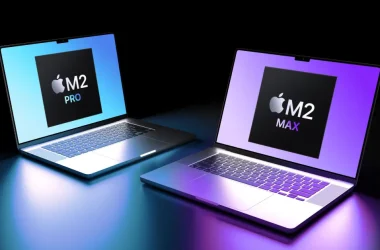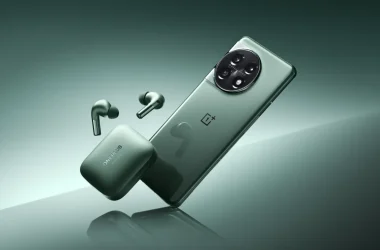Iron-air batteries are a potential alternative to traditional lithium-ion batteries and other types of rechargeable batteries. They work by using oxygen from the air as the cathode and iron as the anode. This creates a chemical reaction that generates electricity.
One of the main benefits of iron-air batteries is their high energy density. They have the potential to store up to 10 times more energy than traditional lithium-ion batteries, making them a suitable alternative for large-scale energy storage applications such as electric vehicles and grid storage.
Iron-air batteries are also relatively inexpensive to produce, as the main materials used are iron and oxygen, which are abundant and inexpensive. Additionally, they have a long lifespan and are able to withstand high temperatures and harsh environments, making them ideal for outdoor and industrial applications.
However, there are also some challenges to overcome with iron-air batteries, such as the need for efficient oxygen-diffusion systems and the development of more durable and stable iron-based catalysts. Despite these challenges, researchers and companies are actively working to improve the technology and make iron-air batteries a viable alternative to traditional batteries.

What are iron-air batteries?
Iron-air batteries, also known as iron-air or iron-oxygen batteries, use iron as the anode (negative electrode) and oxygen as the cathode (positive electrode). The electrolyte, which is the substance that facilitates the movement of ions between the electrodes, is typically an aqueous solution of potassium hydroxide.
During operation, the iron anode reacts with oxygen from the air to form iron oxide (FeO) and electrons. The electrons flow through an external circuit to the cathode, where they react with oxygen to form water (H2O). This creates a flow of ions between the electrodes, creating a current.
The overall reaction can be represented by the following equation:
Fe + O2 + 2OH- → Fe(OH)2 + 2e-
The components of an iron air battery include:
Iron anode: This is the negative electrode of the battery, which reacts with oxygen to form iron oxide and electrons.
Oxygen cathode: This is the positive electrode of the battery, which reacts with the electrons and ions from the anode to form water.
Electrolyte: This is the substance that facilitates the movement of ions between the electrodes. It is typically an aqueous solution of potassium hydroxide.
External circuit: This connects the electrodes and allows the electrons to flow through it, creating a current.
Current collector: This is a conductive material that is used to collect the electrons from the anode and transfer them to the external circuit.
Separator: This is a material that separates the anode and cathode, preventing them from coming into contact with each other and shorting the circuit.
Iron-air batteries have a high energy density and are relatively inexpensive to produce, making them a promising technology for large-scale energy storage applications. However, they have a relatively short lifespan and are not as efficient as other types of batteries, such as lithium-ion batteries.

Advantages of iron air batteries
High energy density: Iron-air batteries have a high energy density, meaning they can store a large amount of energy in a small space. This makes them ideal for use in portable devices and electric vehicles.
Long lifespan: Iron-air batteries have a long lifespan, with some estimates suggesting they can last for up to 20 years. This makes them a cost-effective option for long-term energy storage.
Environmentally friendly: Iron-air batteries are made from readily available, non-toxic materials and do not produce any harmful emissions during operation. This makes them an environmentally friendly option for energy storage.
High efficiency: Iron-air batteries are highly efficient, with a round-trip efficiency of up to 85%. This means that the majority of the energy stored in the battery can be used for power.
Low cost: Iron-air batteries are relatively inexpensive to produce, making them a cost-effective option for energy storage. This could make them a viable option for widespread use in the future.

Current developments and challenges
Iron-air batteries, also known as iron-air batteries or iron-air fuel cells, are a type of rechargeable battery that uses oxygen from the air as the cathode and iron as the anode. They have the potential to provide high energy density and long cycle life, making them a promising technology for various applications such as electric vehicles and grid storage.
Recent research and development in iron air batteries has focused on improving the performance and durability of the batteries. Some of the key areas of research include:
- Cathode material development: Researchers are working on developing new cathode materials that can improve the efficiency and stability of the battery.
- Anode material development: Researchers are investigating the use of different anode materials, such as iron-carbon composites, to improve the performance of the battery.
- Electrolyte development: Researchers are developing new electrolytes that can improve the stability and conductivity of the battery.
- Battery management systems: Researchers are developing new methods for managing the battery, such as controlling the oxygen flow and monitoring the battery’s state of charge.
- System integration: Researchers are working on integrating the iron air battery into a larger system, such as an electric vehicle or grid storage system.
Iron-air batteries have the potential to be a cost-effective alternative to lithium-ion batteries due to their lower material costs and higher energy density. Iron is a more abundant and inexpensive material compared to lithium, which can help to lower the overall cost of production. Additionally, iron-air batteries have a higher energy density than lithium-ion batteries, meaning they can store more energy in a smaller space.
Iron-air batteries are a promising alternative to lithium-ion batteries for electric vehicles due to their potentially longer lifespan and lower cost. Here are some important findings from the provided web search results regarding the use of iron-air batteries in electric vehicles:
- Tesla announced in October 2021 that it will use iron-based batteries for its standard Model 3 and Model Y models across global markets. This suggests that iron-air batteries are becoming increasingly viable for use in electric vehicles.
- The theoretical lifespan of an iron-air battery is 100 to 150 hours of electricity, which is longer than that of lithium-ion batteries. Additionally, iron-air batteries are expected to cost just $20 per kWh of storage on a full-sized battery, which is significantly lower than the cost of lithium-ion batteries.
- MIT spinout Form Energy has developed an iron-air battery prototype that could provide reliable power from renewable sources at less than $20 per kilowatt hour, which could be a “tipping point for green energy”. The company is also building a new iron-air battery facility in West Virginia.
- In terms of technical design, some researchers are exploring high-temperature, iron-air battery designs that use molten salt as a type of electrolyte for electrical conductivity.
This can be beneficial for applications such as electric vehicles and renewable energy storage systems, where space is limited. Additionally, iron-air batteries have a longer lifespan compared to lithium-ion batteries, which can help to reduce replacement costs over time. Overall, iron-air batteries have the potential to offer a cost-effective and efficient alternative to lithium-ion batteries for a wide range of applications.






